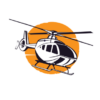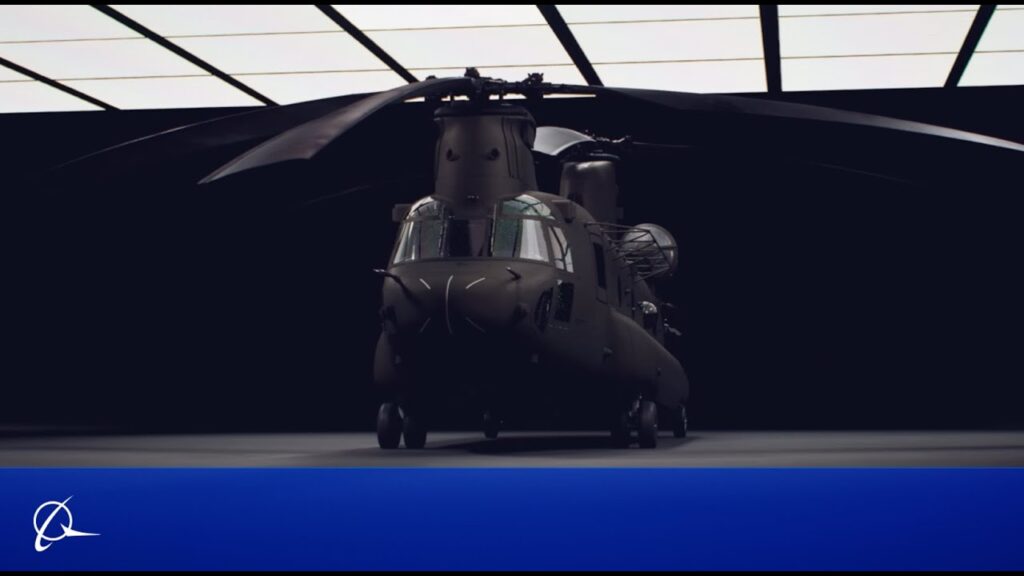History and Development of the Boeing CH-47 Chinook
The Boeing CH-47 Chinook, a versatile, twin-engine, heavy-lift helicopter, has a rich history that spans over six decades. Its journey began in the late 1950s when the U.S. Army, seeking a replacement for the CH-37 Mojave, commissioned the Vertol Aircraft Corporation to develop a tandem rotor helicopter. This led to the creation of the Model 107, which later evolved into the Model 114, the prototype of the CH-47 Chinook.
The first CH-47 was rolled out of the assembly line in 1961, and by 1962, the Chinook was already serving in combat operations during the Vietnam War. Its exceptional performance in diverse and challenging conditions underscored its importance in the U.S. military. In the 1970s, the CH-47 underwent a series of upgrades, resulting in the more advanced and powerful CH-47D. This variant featured more robust engines, composite rotor blades, and an upgraded transmission system, significantly enhancing the Chinooks lift capacity and overall performance.
Modernization of the CH-47 Chinook
In the early 21st century, Boeing introduced the CH-47F and MH-47G variants, characterized by improved avionics, systems, and engines, ensuring the Chinooks relevance in modern warfare. In 2011, Boeing delivered the first CH-47F Chinook with an upgraded digital cockpit, enhancing the aircrafts capabilities in todays digital age.
In addition to the U.S. Army, the CH-47 Chinook has been adopted by military forces in nations around the world, including the UK, Canada, Australia, and Japan, among others. Today, Boeing continues to innovate and upgrade the Chinook, maintaining its status as a reliable, high-performing heavy-lift helicopter, ready to meet the evolving demands of global defense forces.
Technical Specifications and Features of the Boeing CH-47 Chinook
The Boeing CH-47 Chinook is a robust, twin-engine, tandem rotor heavy-lift helicopter renowned for its exceptional operational versatility. Its technical specifications and features make it a unique addition to the global military arsenal. With a maximum takeoff weight of 50,000 pounds, it stands as one of the heaviest lifting Western helicopters. The Chinook is powered by two Honeywell T55-GA-714A turboshaft engines, each delivering 4,733 horsepower, offering a top speed of 170 knots (196 mph).
Design and Construction
The Chinooks distinctive tandem rotor design eliminates the need for a tail rotor, improving lift capacity and overall performance. The fuselage is designed for optimal aerodynamics with a length of 98 feet and a height of 18.9 feet. Its design also includes a fully integrated, digital cockpit management system, improving pilot situational awareness.
Capacity and Performance
The Boeing CH-47 Chinook has a significant carrying capacity, with a spacious cargo bay that can accommodate up to 33 troops or 24 litters and two attendants. It can also carry up to 26,000 pounds of cargo externally. The Chinooks range is another impressive feature, with a maximum unrefueled distance of 400 nautical miles. Its operational ceiling is 20,000 feet, and it has a climb rate of 1,522 feet per minute, showcasing its outstanding performance in high-altitude operations.
Advanced Systems and Armaments
The CH-47 is equipped with advanced avionics and flight systems, including a digital automatic flight control system, a common avionics architecture system, and an advanced cargo handling system. For defense, the Chinook is typically armed with two M240 7.62mm machine guns on pintle mounts and can be fitted with additional weaponry as per mission requirements.
Roles and Performance of the Boeing CH-47 Chinook in Military Operations
The Boeing CH-47 Chinook is a versatile twin-engine, tandem rotor heavy-lift helicopter that plays a significant role in military operations globally. This helicopters primary roles include troop transportation, artillery placement, and battlefield resupply. It has a wide loading ramp at the rear of the fuselage and three external ventral cargo hooks, making it highly efficient in carrying heavy payloads. The Chinook has a remarkable capacity to transport up to 55 troops or more than 12,000 pounds of freight.
Troop Transportation
In the role of troop transportation, the Boeing CH-47 Chinooks performance is unmatched. Its ability to quickly transport large numbers of troops to and from the battlefield has made it an essential asset in modern warfare. Its speed, power, and capacity allow for rapid response and deployment of forces, greatly enhancing operational flexibility and effectiveness.
Artillery Placement and Battlefield Resupply
As for artillery placement, the CH-47 Chinooks robust lifting capacity and agility make it ideal for transporting heavy artillery pieces, even in challenging terrain. This capability enables armies to rapidly deploy firepower where needed most, providing a decisive advantage in combat situations. Additionally, the Chinooks role in battlefield resupply is vital. It can deliver ammunition, fuel, water, and other supplies to front-line units, ensuring they remain operational and effective.
The performance of the Boeing CH-47 Chinook in these roles is further enhanced by its advanced avionics and systems. It features a fully integrated, digital cockpit management system, Common Avionics Architecture Cockpit (CAAC), which improves situational awareness and reduces pilot workload. Its powerful engines and innovative design allow it to operate in a wide range of environments, from hot deserts to high-altitude mountains, demonstrating its versatility and adaptability in military operations.
Comparing the Boeing CH-47 Chinook with Other Military Helicopters
The Boeing CH-47 Chinook is a standout amongst military helicopters, known for its unique design and exceptional capabilities. When compared to other military helicopters such as the UH-60 Black Hawk and the AH-64 Apache, the Chinook offers distinct advantages and features that set it apart.
Capacity and Load Capability
One of the key areas where the Boeing CH-47 Chinook shines is in its capacity and load capability. It has the ability to carry up to 55 troops or 24,000 pounds of cargo, surpassing the capacity of many other military helicopters. For instance, the UH-60 Black Hawk can only carry up to 11 troops or 9,000 pounds of cargo. This makes the Chinook a more suitable choice for heavy-lift missions and large-scale troop transportation.
Speed and Range
Despite its large size, the Boeing CH-47 Chinook also impresses with its speed and range. With a maximum speed of 196 mph and a combat range of 400 miles, the Chinook exceeds the capabilities of the AH-64 Apache, which has a maximum speed of 182 mph and a combat range of 300 miles. This gives the Chinook an edge in missions requiring both speed and long-distance travel.
Versatility and Durability
The Chinooks versatility is another significant factor that sets it apart from other military helicopters. Its tandem rotor design allows for exceptional stability and control, enabling it to operate in diverse environments and weather conditions. Moreover, the Chinooks robust construction and ability to withstand heavy fire make it a reliable choice for combat and rescue missions. In contrast, other helicopters like the AH-64 Apache, while having advanced attack capabilities, lack the same level of versatility and durability.
The Future of the Boeing CH-47 Chinook: Upgrades and Improvements
The Boeing CH-47 Chinook, a versatile and reliable heavy-lift helicopter, has been the backbone of many military operations worldwide. Its future lies in a series of planned upgrades and improvements, aimed at enhancing its capabilities and extending its operational lifespan.
One significant upgrade is the Block II program. This initiative focuses on increasing the Chinooks payload capacity, reducing its weight, and improving its overall performance. The advanced rotor blades, for example, are expected to boost the helicopters lift capacity by around 1,500 pounds. This increased lift will be a game-changer in high-altitude and hot climate operations, where lift capacity can be compromised.
Advanced Chinook Rotor Blades (ACRB)
The Advanced Chinook Rotor Blades (ACRB) are another major improvement in the pipeline. These newly designed blades will not only improve the aircrafts lift capacity but also increase its fuel efficiency. The ACRB is designed to fold easily, facilitating the helicopters transportation and storage.
Another planned improvement is the digital automatic flight control system. This system will allow the Chinook to operate in diverse weather conditions and flight environments, improving the safety and reliability of the aircraft. Additionally, the implementation of the Common Avionics Architecture System (CAAS) will provide pilots with enhanced situational awareness, reducing the workload and increasing the aircrafts overall mission effectiveness.
Boeings commitment to continuous improvement and technological innovation ensures the CH-47 Chinooks future as a key player in military operations. The planned upgrades and improvements are set to provide unmatched heavy-lift capabilities and operational versatility, keeping the Chinook at the forefront of military aviation.



